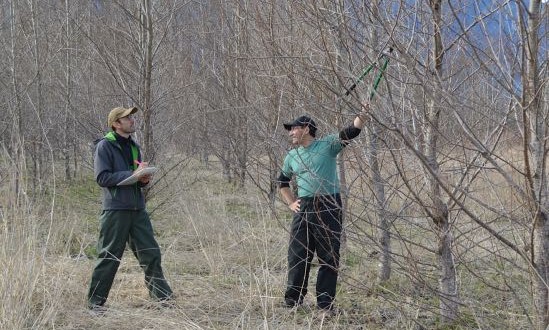Native black cottonwood trees in B.C. are at serious risk of catching a killer, non-native fungus unless researchers can figure out how to stop it, according to B.C. forest scientists.
The fungus, Mycosphaerella populorum, uses extra genes to produce a toxin that can cause fatal lesions on the leaves, stems and branches of poplar trees. The extra genes were found through genome sequencing, the mapping of an organism’s DNA.
The discovery of their existence, outlined this week in a study in The Proceedings of the National Academy of Sciences, brings researchers one-step closer to fully understanding how the fungus attacks and kills trees.
“Our findings will help us develop better methods to detect the fungus and prevent its spread,” says senior author Richard Hamelin, a UBC forestry professor and research scientist at Natural Resources Canada.
He speculates the extra genes could be the result of random events in nature.
“When leaves fall on the ground, a big soup of microbes grow in close proximity, which could lead to gene transfer,” says Hamelin. “It’s probably rare, but it appears to be more common than we ever thought.”
The fungus threatens poplar trees in plantations and is mostly found in eastern North America. It was not widespread in B.C. until an outbreak in 2005 at a poplar plantation in Harrison Mills, the study’s research site.
Hamelin says there are ecological concerns the fungus will eventually jump into native poplar trees, specifically black cottonwoods along B.C.’s coast. The black cottonwoods help improve water quality, provide for wildlife habitat and prevent erosion.
Agencies/Canadajournal
 Canada Journal – News of the World Articles and videos to bring you the biggest Canadian news stories from across the country every day
Canada Journal – News of the World Articles and videos to bring you the biggest Canadian news stories from across the country every day



